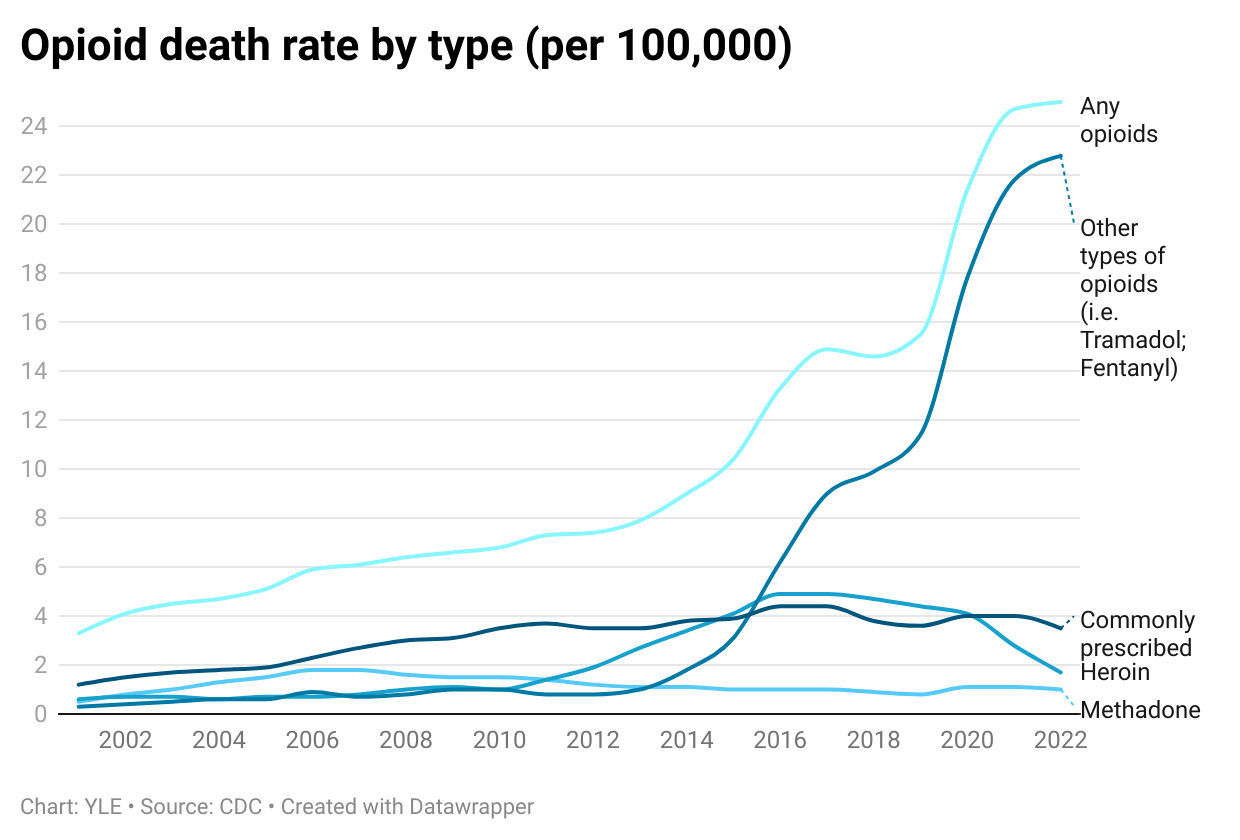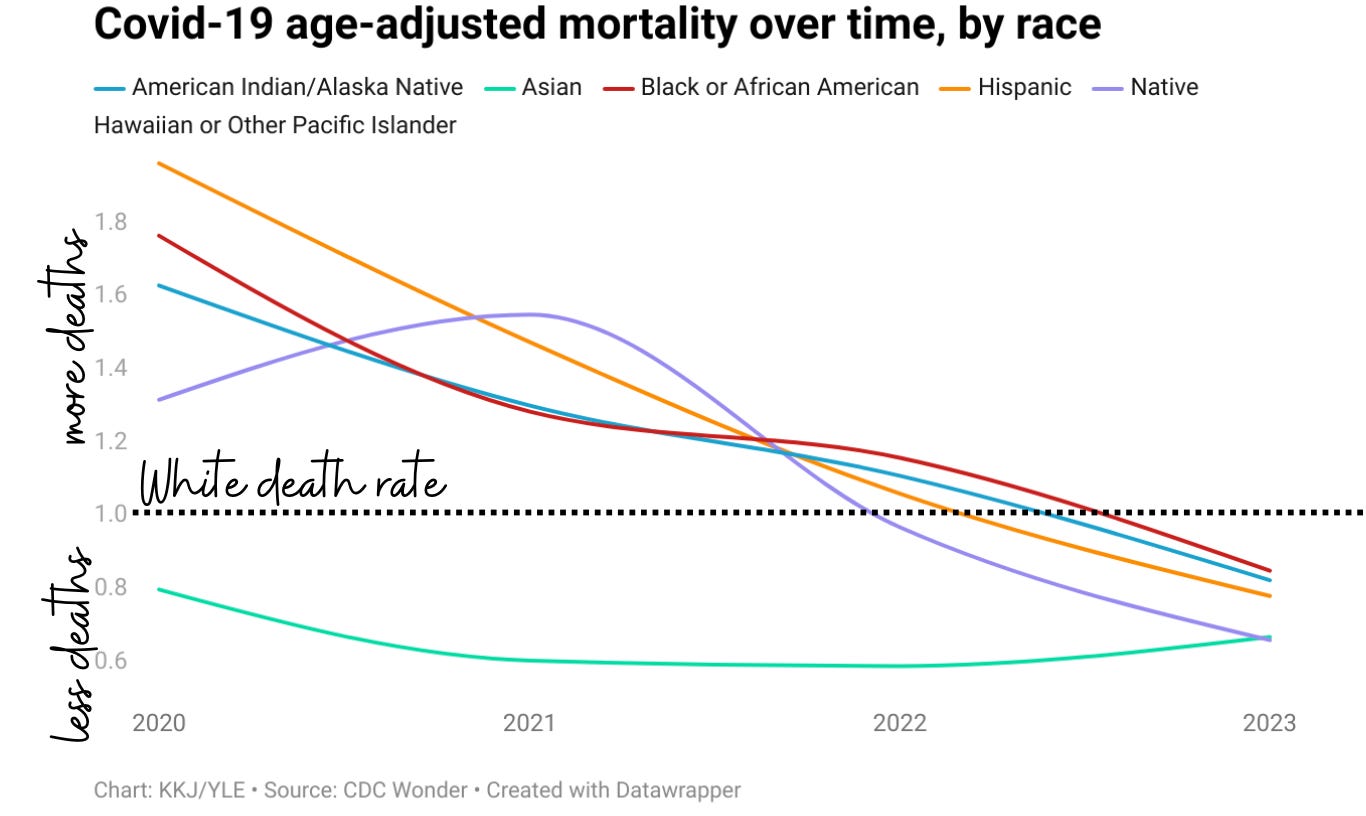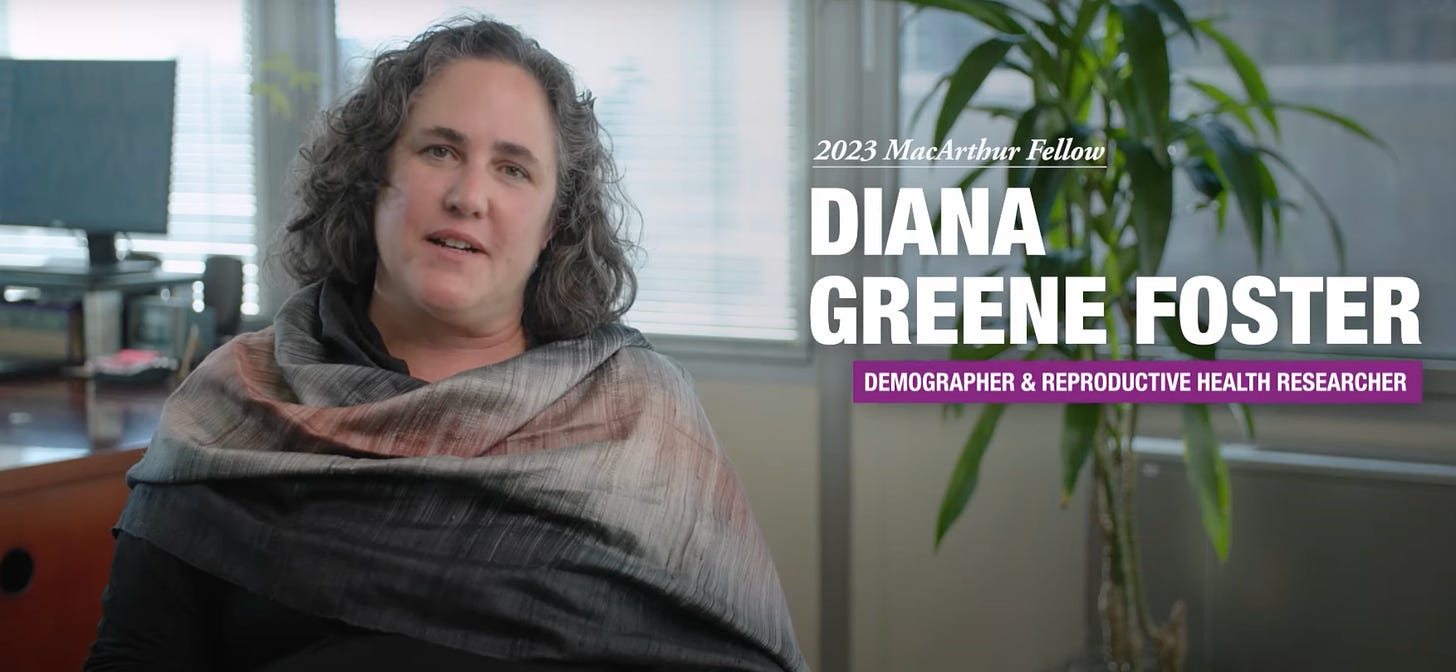Every year, the U.S. intelligence community publishes a threat assessment on who was trying to kill us and how it was stopped. It surprises me that the public health community doesn’t do the same, given the impact that biosecurity, health, and the environment have on Americans’ quality of life and survival.
So, consider this your end-of-the-year public health assessment report: What was trying to kill us? What did we stop? What should we focus on in 2024?
I cobbled together this list with the help of many others. (Disclaimers: These are in no particular order, I am sure we missed many, and this doesn’t mean our work is done.)
Things are looking up
Life expectancy increased (following a dramatic decline in 2020-2021), primarily from decreases in Covid-19, heart disease, unintentional injuries, cancer, and homicide. (Note: Our latest data is 2022 released in 2023, so I’m chalking this up to 2023.)

Opioid deaths saw an incredible deceleration thanks to prevention success stories, particularly in the Northeast.
Suicide 988 hotline improved reach in 2023 after a rough roll-out in 2022.
Medicaid coverage expanded this year to North Carolina and South Dakota. It was also expanded for postpartum care in Mississippi.

The Covid-19 national and global public health emergency ended. And, until the end, we saw the continued decline in Covid-19 death disparities due to targeted, local outreach and stakeholder engagement and investment. Although Covid-19 is here to stay (and mass confusion ignited thereafter and disparities are back), reaching this point was an incredible feat for public health.
Momentum building thanks to huge initiatives
Health linked to climate. For the first time, COP23 (U.N. Climate Change Conference) had a full day dedicated to this topic.
Loneliness and isolation. The Surgeon General raised the alarm this year.
Gun violence prevention. The New Office of Gun Violence Prevention was initiated at the federal level. There were some state-level wins, too, like California funding key gun violence intervention programs.
Indoor air quality made waves with the first national targets for indoor air quality.
Fresh tools
Vaccines. For the first time, we have vaccines for the “big three” respiratory viruses, including RSV, and updated protection against Covid-19. The Chikungunya vaccine was approved. WHO recommended another malaria vaccine for children, which will help immensely with demand.
Treatment options, like over-the-counter Narcan and genetic editing for sickle cell disease. Using AI, MIT researchers identified a new class of antibiotic candidates. Weight loss drugs, with preliminary data showing the impact on blood sugar, inflammation, and heart disease.
Increased disease surveillance, adopting innovative solutions, like wastewater systems, for other diseases, like opioids, flu, and RSV.
Triumph in the field
There are more than 3,500 local health departments in the United States. We don’t hear about a lot of their successes. But here are some that come to mind:
Teen mental health focus as seen in free care services in New York City and Washington’s teen health hub.
Quick responses on a local level for food-borne illnesses.
Remember when Disneyworld was closed because of the first malaria cases in 20 years? Oh yeah, this didn’t happen because it was stopped from spreading.
Internationally, there were also a lot of successes.
Belize, Azerbaijan, and Tajikistan were declared free of malaria.
Global road traffic deaths decreased by 5% since 2010.
Help is on the way
In 2021, nearly half of the public health workforce left due to pay, burnout, lack of advancement opportunities, organizational culture, and lack of support or recognition.
2023 provided us with good news:
The American Rescue Plan’s $3 billion in federal funding was delivered to health departments to build and bolster a depleted workforce.
Interest and undergraduate degrees in public health have continued to increase, having grown by by more than 1,100% between 2001 and 2020.
Honors and awards
Public health begins and ends with people. There are so many rockstars, but three received the highest scientific honors this year:
Nobel Peace Prize went to Drs. Drew Weissman and Katalin Karikó for the mRNA vaccines that saved millions of lives.
MacArthur Genius Award went to Dr. Diana Greene Foster for her work in reproductive health.
Going into 2024
While we have tremendous successes, that doesn’t mean we don’t have big challenges ahead.
Our field is allocated <3% of the national healthcare budget, but many health trends are going in the wrong direction. This will only be intensified by climate change, decreasing trust in institutions, and upcoming challenges with AI.
We have our work cut out for us.
In 2024, we must start reimagining public health for the 21st century. Here are a few ideas from my small corner of the world:
Make public health visible. We desperately need to get out of the mindset of “if it works, it’s invisible.” This will help us build trust, increase funding, and remain relevant.
Put the “public” back in public health. Open two-way streets with communities. Show up during non-emergency times. Learn the art form of knowledge translation. Equip trusted messengers. Be inclusive.
Get with the times. The information landscape has changed, and public health has not kept up.
Strengthen cross-sector coordination. We must strengthen horizontally—operations, communication (and misinformation), data, policy, and healthcare capacity.
Embrace politics. We need sustained, constructive engagement. Policy isn’t just based on science. We need to choose the right battles.
Bottom line
I couldn’t be more proud to be in the field of public health. We continue to accomplish so much with so little. It’s time to reimagine public health, so the world can start seeing and feeling it, too.
Here’s to 2024. Happy New Year!
Love, YLE
Gift to subscribers (especially public health people)
YLE could not survive without your support. You may not know it, but you are already helping achieve many of the 2024 goals—making public health visible, putting the public back in public health, and getting with the times. Below is a small token of my appreciation. What you do (or support) matters.









